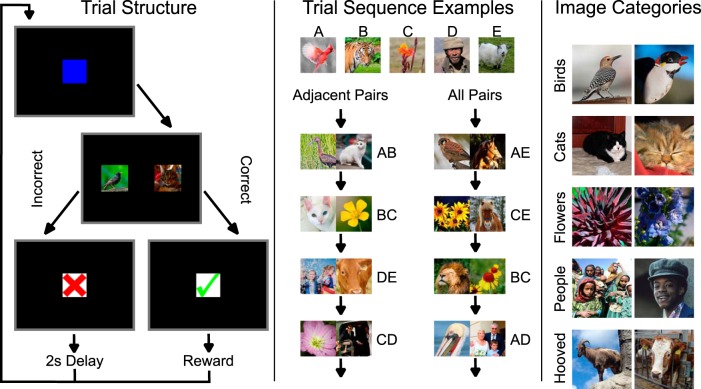Figure 1.
Procedure for the categorical TI task. Left, Structure for any single trial of the task. Subjects must touch a blue square to begin the trial, which is immediately replaced by two images. If a correct response is made, subjects see a green checkmark and are immediately given a fluid reward. If an incorrect response is made, subjects see a red X, followed by a black screen for 2 s. Following feedback, the next trial begins with the start stimulus. Middle, Each phase of the experiment made use of a consistent category sequence (in this case, birds-cats-flowers-people-hooved). The stimuli themselves, however, were drawn at random from the image bank during every trial. During adjacent-pair trial (using only AB, BC, CD, and DE), the identity of the stimulus changed for every trial, even when the same category appeared in two consecutive trials. The left-right position of stimuli was also counterbalanced. This was also the case during all-pairs sessions, which intermixed all possible stimulus pairings. Right, Two exemplars each from the five stimulus categories used in the experiment. In all categories, an effort was made to include category members from multiple distances and angles, with a mixture of both solitary and group photos, as well as both color and black-and-white. This stimulus diversity was intended to reduce subjects' reliance on specific discrete features as category cues. The individual stimulus images are reproduced under Create Commons licenses.

